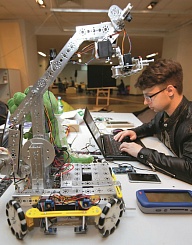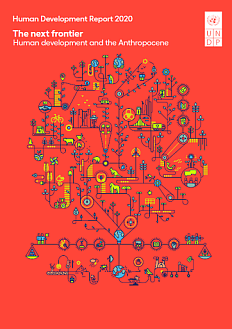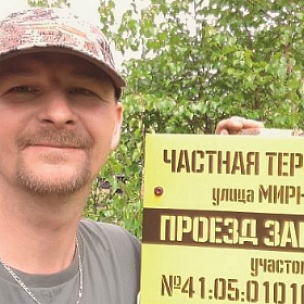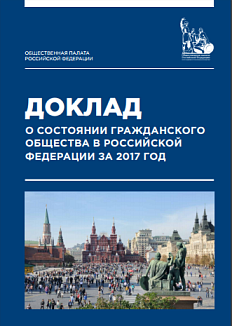The Far Eastern Federal University (FEFU) was formed by the merger of the four biggest higher education institutions in the Russian Far East, the oldest of which, the Eastern Institute, was founded in 1889. Today, the FEFU is the main centre for the development of science and technology in the region.
Russky Technopark
Scientific research at the FEFU takes place across nine different schools equipped with the latest research laboratories. One of the universitys key priorities is to forge a better connection between science and the real sector of the economy. That is the goal of the Russky Technopark, located on the FEFU site.
The synchrotron of the future
In the coming years, Russky Island will become home to a synchrotron with a source of terahertz radiation. The machine will help tackle challenges in biology, quantum materials, and ultra-high speed information processing. The synchrotron will also allow researchers to examine the structure of new biopolymers discovered during studies of deep-sea organisms. This will help resolve issues in pharmacology and medicine, including oncology.
A unique chocolate with ginseng and... gold?
FEFU researchers are taking advantage of the biodiversity of the Russian Far East to develop a fundamentally new natural product using a green technology called supercritical fluid extraction (SFE) for the food, pharmaceuticals, and cosmetics industries. Carbon dioxide is used for the extraction process, with no organic solvents.
23,000 undergraduate and around 500 graduate students are enrolled at the FEFU. In 2018, 84 young scientists completed their graduate studies at the FEFU. Some of them already have made notable achievements in theoretical physics, biotechnology, engineering, information security, and radiation safety
In the FEFUs Nanotechnology Research and Education Centre, active SFE experiments are underway which have already obtained extracts of ginseng, Amur cork, eleutherococcus, and more.
 These new extracts have already been used to prepare sample batches of healthy products. For example, chocolate with ginseng and... gold, which has adaptogenic properties.
These new extracts have already been used to prepare sample batches of healthy products. For example, chocolate with ginseng and... gold, which has adaptogenic properties.
Public interest was also piqued by nanochocolate supplemented with seaweed, as well as innovative enhanced mayonnaises, marmalades, and jellies using Far Eastern ingredients.
At the DalAgro exhibition in March 2018, the School of Biomedicine showcased its achievements in food product technology. There was bread with scallops, a dessert made of actinidia, muesli with chaga mushroom extract, sausages with kelp, mayonnaise dressing enriched with carotenoids from ocean molluscs, bread enhanced with green seaweed, gluten-free baked goods, meat spreads, marmalades and jellied desserts made from an infusion of kelp with additives made of Far Eastern berries and an extract of the fruit of the Manchurian walnut, and more.
Food made with sea organism extracts helps to counter diabetes and pre-diabetes, lowering cholesterol. The use of extracts of Far Eastern plants and sea organisms in food production technology is protected by patents in the Russian Federation. Manufacturing standards that allow the manufacturing of these products in production-line conditions have been developed.
First Person
FEFU Rector Nikita Anisimov
«The Technopark is a mechanism for collaboration between business, education, science, government bodies, and the consumers of new technologies. Technoparks are built at universities for a reason. They provide a space where major companies can open research offices and students and scientists can locate their startups. Technoparks make it easier for them to collaborate with different foundations, development institutes, and outside parties that help new companies enter the global market. In 2017, the Technological Entrepreneurship Support Foundation was also created at the FEFU. Its objective is to gather together young entrepreneurs, while serving as a buffer between them and the bureaucratic machinery that is often set up in a way that can crush new startups without even noticing. We will be helping successful startups to enter promising global markets, including in the Asia-Pacific region.
New prostheses and exoskeletons
The Neurostart cluster is home to a new team developing neuro-engineering solutions. Artur Biktimirov, the FEFU Medical Centre neurosurgeon who is the mastermind behind the project, notes that future engineers and doctors have already created a functional bionic prosthetic foot and calf, an exoskeleton for the upper extremities for rehabilitative use and a system for sensitizing it, a programme for monitoring the condition of patients with Parkinsons disease, myographic data transmitters, implanted neurostimulators, and other promising inventions. The developers are led by a team of students who consult with doctors, engineers, and people dealing with health challenges.
Battling stress
FEFU masters student Sergey Vasiltsov proposed using neurobiological feedback technology (NFB) to reduce stress. His work is based on a simple principle: an encephalograph records indicators from areas of the brain cortex responsible for concentration, self-control, and discursive reasoning. At the same time, the sound of rain is played through headphones. The higher the volume of worries, streams of thought, and stress, the louder the sound plays. The subjects task is to subdue his or her emotions, calm down, and reduce the volume in the headphones. Feedback enhances the subjects ability to manage stress independently. This invention can help people to train their own minds. Initial testing revealed that 15 days of daily exercises yield reliable results. After the test, all participants in the experiment reported feeling better about themselves, and experiencing a lower overall stress level.
Research to fight cancer
Maria Sidorova, a masters student at the FEFU School of Natural Sciences, developed a new way to synthesize organic ocean substances that fight tumours. Developing this method will allow scientists to obtain formerly unavailable compounds and study their biological potency, and may lead to the invention of next-generation medicines.
Scientists at the natural compounds synthesis laboratory are also studying the interaction of biologically active alkaloids and therapeutic targets, using computer modelling, and they are working to purposefully synthesize the most promising compounds for additional biological testing. This research may result in a new generation of medicines, including cancer drugs.
Discovering new deep-sea organisms
As a result of the 2016 KuramBio II expedition, scientists discovered almost 500 new species of previously unknown deep-sea organisms. Scientists from the FEFU School of Natural Sciences and the Far Eastern Branch of the Russian Academy of Science are studying macro- and micro-organisms from samples taken near the Kuril-Kamchatka Trench at a depth of 9,500 metres.
Cleaning up radioactive waste and processing waste from coal combustion
FEFU scientists have developed new nanostructured sorbents from natural materials, which will help clean up waste products generated during the repair and operation of nuclear-powered ships.
The use of nanotechnology is an important technique: when creating the sorbents, an extremely thin film forms on their surface, making them better able to purify liquids containing petroleum products.
The FEFU has developed techniques for the comprehensive recycling of bottom ash waste from power plants. Some of the products obtained from waste materials at Vladivostok and Khabarovsk power plants include purified blast-furnace slag sand and pelletized unburned carbon.
Micro-particles in internal combustion engine exhaust gases
When internal combustion engines run, they generate exhaust gases containing 200 different chemical compounds. A majority of those are toxic and carcinogenic to living organisms.
Pollution from the products of exhaust gases leads to increases in a whole array of respiratory illnesses, diseases of the circulatory system, and cancers.
FEFU scientists, under the leadership of prominent European toxicologist Aristides Tsatsakis, are doing experimental research on the impact of solid particles from exhaust gases on the biocenosis of the modern-day city.
They have discovered that exhaust gases from new vehicles with minimal mileage are the source of a large quantity of metallic micro- and nano-particles. This is caused by the grinding of engine parts and components, and by the use of catalyst systems.
Government support is extremely important to research such as this. Studying these problems will be the key to understanding future directions of development for automotive technology and will help us understand how best to use legislative tools to protect the environment.
Rectifying environmental damage in Golden Horn Bay
The FEFU is running a comprehensive programme to rectify the environmental damage that has built up in Golden Horn Bay in Vladivostok. To search for sunken ships and their wreckage, and for underwater cable lines placed on the surface and the near-bottom layer of the bay floor, FEFU scientists and staff worked to conduct a marine magnetic survey. Its results have already been used to generate a digital model of the floor of the bay, chart its depths, and create sonar sea-floor imagery. Eight underwater objects have been identified that require inspection by divers. Moorings and coastlines have also been examined, and 3D models made of sites that have suffered environmental damage.
Zero-waste sewage runoff processing
Methods currently used to sanitize sewage runoff require a great deal of space for sanitation equipment and processing sludge. This kind of sanitation equipment is expensive and has an adverse impact on the environment. At the FEFU, engineers are developing a biogas unit to process sewage runoff using a combination of technologies for high-temperature liquid-phase oxidation and anaerobic fermentation. The unit can be used for sewage sanitation both in individual homes and entire municipalities. It produces highly valuable outputs: a biogas that can be transformed into electricity or thermal energy and water-soluble humates for agricultural use.
FEFU scientists are developing the worlds first sub-ice communications lines with colleagues from Harbin Engineering University. The project has special significance for oil and gas exploration and drilling in the Arctic
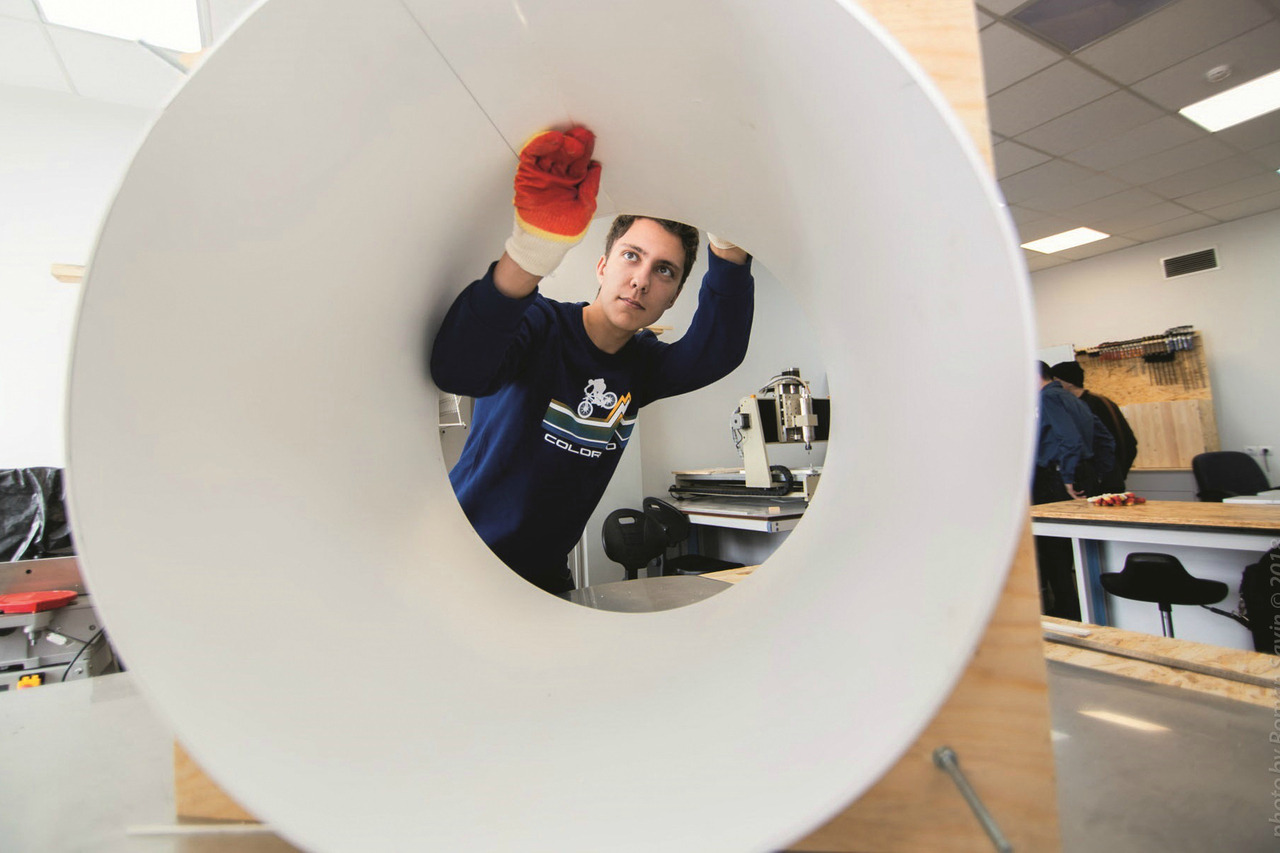 Robotics and a windmill
Robotics and a windmill
In 2017, a robotics team from the FEFU and the Far Eastern Branch of the Russian Academy of Sciences took second place in the International RoboSub Competition in San Diego. The FEFU students unmanned craft can move in five degrees of freedom and even do a somersault. The FEFU team has won prizes every year since 2012 in the autonomous robots category at RoboSub tournaments and at the Singapore AUV Challenge championships.
FEFU students developed a rotary windmill with a vertical axis, which can serve as a local source of electricity in a city or remote area. The windmill can operate in extreme climatic conditions in the Arctic. At a wind speed of 10 m/sec., the finished windmill has a capacity of 2,500 watts, and operates at wind speeds from 2.5 m/sec to 40 m/sec. It works with wind coming from any direction, and stays operational during gusting winds, storms, and hurricanes.
Under-ice communications for the Arctic
FEFU scientists are developing the worlds first sub-ice communications lines with colleagues from Harbin Engineering University. The project has special significance for oil and gas exploration and drilling in the Arctic.
«Sound travelling under ice acts peculiarly: the signals change significantly, and there is powerful reverberation off the ice and the sea floor. In combining the physical methodologies of the Russian researchers with techniques for information processing from our Chinese colleagues, we will be able to make a breakthrough in Arctic exploration», says Professor Vladimir Korochentsev, who is Head of the FEFU School of Engineering and the experiments director.
The experiment has utilized a pneumatic underwater acoustic projector developed by Engineering School scientists which emits sound waves that spread through the water and the ice, as well as lensed reception antennae.
Text: Alexander ZVEREV, Maria LUKINA
Source: EEF 2018 Official Magazine


